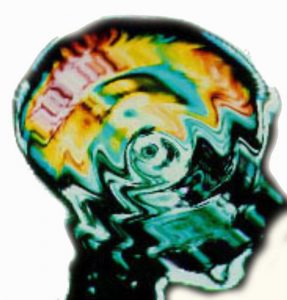General Projects
Also check out our books, papers, and book review pages.
 Animal Names that can be used as Verbs. Conceived and collated by Russell Hamer, Christopher Tyler, and Amy Ione. Animal Names that can be used as Verbs. Conceived and collated by Russell Hamer, Christopher Tyler, and Amy Ione. This is a compendium of animal names (i.e., nouns) that are also used as verbs in the English language. The list includes verbal usages that relate directly and indirectly to the noun’s meaning, analogies and unrelated verbal definitions. There are many different animal classes and every animal in the world belongs to one of them.This list is divided into the five most well known classes of vertebrates (animals with backbones) are mammals, birds, fish, reptiles, amphibians. and is subdivided into common categories of vertebrate animals, together with a category of invertebrates. See the List Here |
Was Leonardo da Vinci’s World Map the First to Name America? A Quincentennial Reappraisal Citation: Tyler, CW. 2019. “Was Leonardo da Vinci’s World Map the First to Name America? A Quincentennial Reappraisal,” Calafia Journal, 2:7-12. Full article |
 Euclid Enhanced by Amy Ione and Christopher Tyler. Euclid Enhanced by Amy Ione and Christopher Tyler. Magritte’s Les Promenades d’Euclide (“The Promenades of Euclid”)(1955) offers us a view of a scene outside a window that is hidden by a canvas inside the room, portraying the identical view. More. |
 Amy Ione’s Painting Computed by Christopher Tyler in MatLab. Amy Ione’s Painting Computed by Christopher Tyler in MatLab. Amy Ione’s 1985 Ink Painting computed in MatLab by Christopher W. Tyler. 1999. The Tyler image is a Matrix algebra version. More |
 What Perspective Constructions Reveals About Optical Aids. by Christopher Tyler. What Perspective Constructions Reveals About Optical Aids. by Christopher Tyler.Hockney and Falco claim that artists use of optics as explains the ‘optical look’ that appeared in paintings after about 1430. As supporting evidence, they show that many paintings reveal different vanishing points in different regions, compatible with the use of optics with a small clear zone, moved from region to region to construct each part of the image. Tyler show several lines of contrary evidence, implying that Renaissance artists constructed their compositions purely through artistic intuition, without optical aids (or accurate geometric methods). More. |
 Keynote: Art in an Age of Science and Technology (2000). by Amy Ione. The San Francisco. International Art Festival, Fort Mason Center, September 22, 2000. Keynote: Art in an Age of Science and Technology (2000). by Amy Ione. The San Francisco. International Art Festival, Fort Mason Center, September 22, 2000.
In an effort to illuminate why artists sometimes invent new technologies and sometimes bring options invented by others into their the artistic repertoire, I will divide my lecture today into three parts: The first section will present five artists to quickly convey how difficult it is to characterize how artists of our time might employ technological breakthroughs in their practices. Next I will attempt to bring some useful frames of reference to contemporary innovations as they pertain to art. Finally, I will integrate some thoughts on the role of painting and the history of photography that I believe relate to how artists exploit innovative technologies today. PDF |
 Christopher Tyler’s Art Investigations Christopher Tyler’s Art InvestigationsTopics include Composition in Art, Perspective Studies, The Eye-Centering Controversy, Hockney’s Optical Hypothesis, The Ultimate Block Party Reference List, Individual Artists, and more |


